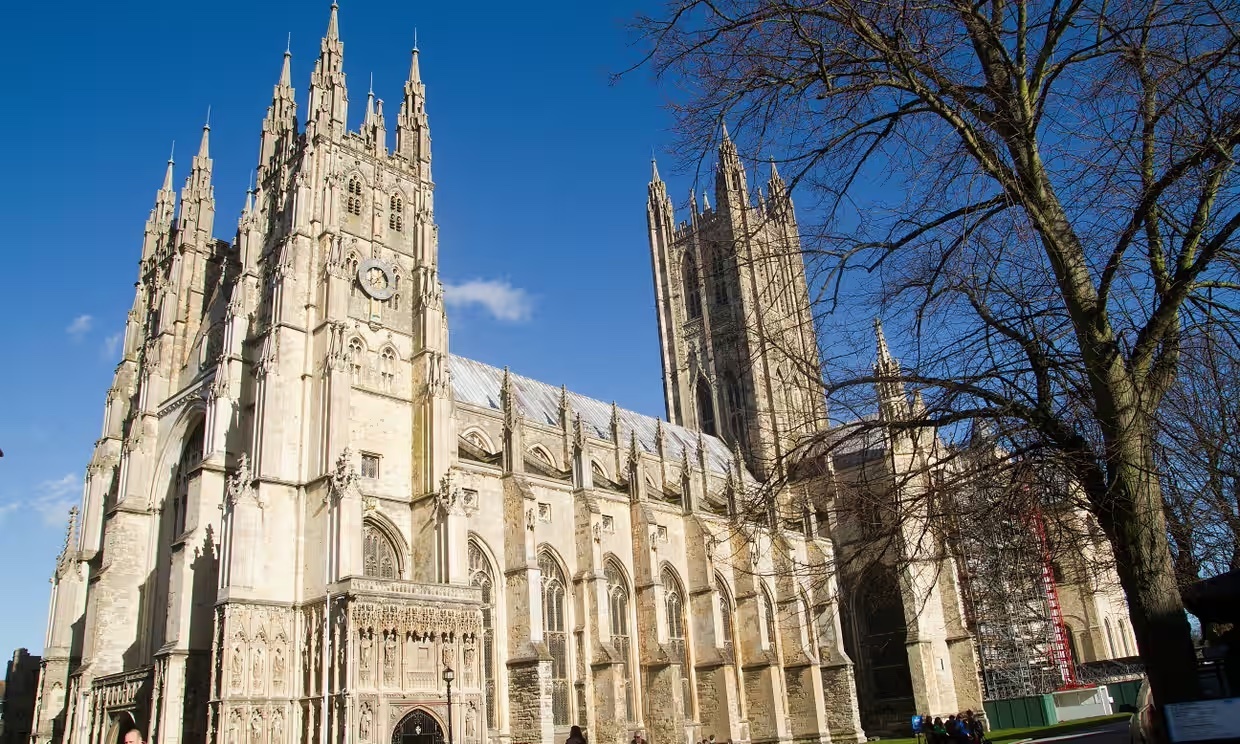1.08.2023
Particles from asteroids and comets lie untouched for years, providing a time capsule of activity

Kent University researchers are collecting dust from Canterbury Cathedral, then moving on to Rochester. Photograph: Theodore Liasi/Alamy
As they clamber up cathedral walls wearing vacuum cleaner backpacks, the researchers look more like ghostbusters than planetary scientists. But for the team at the University of Kent, the equipment is crucial for collecting cosmic dust that becomes stranded on the ancient roofs after falling to Earth from space.
Dr Penny Wozniakiewicz and Dr Matthias van Ginneken plan to visit UK cathedrals in search of the exotic dust particles to understand how much material from space reaches Earth and becomes part of the planet or its atmosphere.
Cathedral roofs are good hunting grounds for cosmic dust because of their size and inaccessibility. “You want the site as undisturbed as possible,” said Wozniakiewicz. “The dust is coming in everywhere, but the rooftops offer an opportunity to collect the dust and not have people trampling all over it.”
The dust particles come from asteroids and comets and smash into the atmosphere at tens of thousands of miles per hour. Many burn up in the process, but some melt and resolidify to form tiny, distinctive spheres that are scattered across Earth’s surface.
Wozniakiewicz said: “We want to go to these rooftops because the particles we find are so fascinating. They are useful to get a feel for the number of particles that are arriving at the surface. That can be related back to the number arriving at the top of the atmosphere, so we can learn about the contribution of this material to the Earth.”
The scientists are pressing ahead with the project after a feasibility study identified cosmic particles amid the dust swept from a section of the roof of Canterbury cathedral that had only been replaced two years ago. The researchers are due to return to Canterbury in the coming weeks for a more methodical vacuuming of an older and larger area of the roof. After that they will strap on their harnesses again and head for Rochester Cathedral.
While the wind and rain sweep much of the dust off the roofs, what particles are found allow the scientists to work out the minimum amount of cosmic dust that is falling. Another advantage of cathedral roofs is that good records are kept of construction work, so the ages of different sections of roof – and how long they have been gathering dust – is well documented.
“For the next rooftops, it’s important that we collect everything we can get access to over a specified area,” Wozniakiewicz said. “Fortunately, I’m OK with heights. Once I’m up there I just get on with it and don’t look down.”
Quelle: The Guardian

